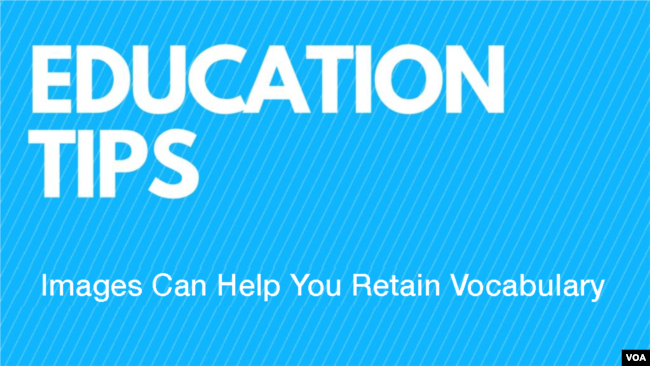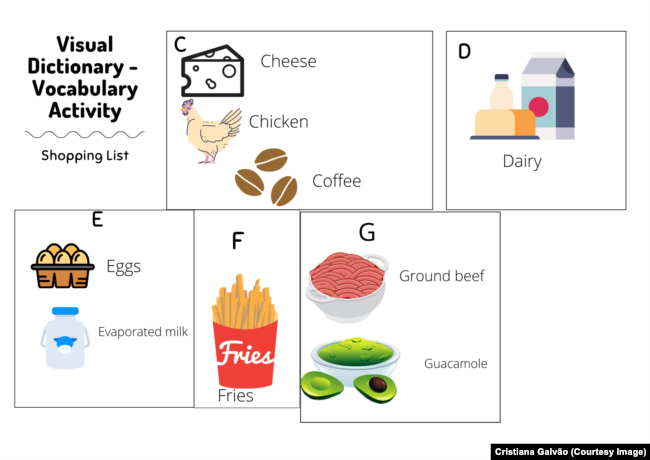EDUCATION TIPS;単語の覚え方について
今回も EDUCATION TIPS を取り上げます。
英語学習者の私、単純に興味を持ったからですが、(・∀・)イイネ!!が1000に迫る勢いです。
記憶力の良い人の話では、画像を頭に取り込むのだと言います。
その意味では、この方法は理にかなっています。
私は、単語単体よりは、文章またはフレーズで覚える派です。
名詞だけならいいですが、動詞やイディオムでは、次になんの品詞が来るかが重要だからです。
特に子供の学習に、いいですね。
フラッシュカード的な。ゲーム感覚で楽しめますね。
フランス語学習初歩の私にも usefull !!!
皆さんも、試してみてください!!!
語彙は底なし沼!!!
Fighting!!!
画像は語彙の保持に役立つ
Images Can Help You Retain Vocabulary
英語の番組を聞いていて、"borrow "という単語を聞いたとします。あなたは何度もこの言葉を聞いたことがありますが、その意味を忘れてしまいます。そこで、あなたの母国語で同等の単語を調べてみましょう。ああ、そうだ、とあなたは思い出します! 数日後、再びその言葉を目にしますが、またしても意味が思い出せません。なぜでしょうか?
自分を責めたり、「私は記憶力が悪いんだ!」と思ったりするのは簡単です。しかし、あなたの記憶力が問題なのではありません。
問題は、ある単語を自分の言語のそれに相当する単語に翻訳することが、語彙を学ぶための効果的な方法ではないということなのです。それは、情報を記憶するために重要なものが脳内に強いつながりが形成しないからなのです。
本当に単語を覚えるためには、単語に注意を向け、その単語を心のイメージや既存の知識と結びつける必要があります。そうすることで、必要なときに素早く簡単に言葉を思い出すことができるのです。今日の教育のヒントでは、語彙を保持するためにイメージを使用する3つの方法について説明します。

Cristiana Galvãoクリスティアン・ガルバオのこの画像は、画像と情報を視覚的な辞書で整理する簡単な方法を示しています。
1-写真を使う
まず、一番わかりやすい方法を説明しましょう:写真を視覚的な補助として使うことです。
ダニエル・ゼリン さんは英語教師であり、ティーチャートレーナーでもあります。彼女は、南アフリカ、ラトビア、祖国のモーリシャスで25年近く教えてきました。
ゼリンさんは、人間はイメージで考えるので、視覚的な補助は言語学習者にとって重要だと言います。
「文章を聞いたとき...誰かが話しかけてきたとき...私たちは絵を見ます。言葉は見えません。脳の中の文章を見ていないのです。’昨日ビーチに行ったの ’ のように私が言ったら、あなたはビーチにいる私を見るでしょう。文章が書かれているのを見ることはないのです。」
彼女は初級の生徒と中級の生徒には絵やイメージを使っています。
クリスティアン・ガルバオさんは、小学生から大学生まで、あらゆるレベルの生徒に絵を使って語彙を教えています。
カリフォルニアに拠点を置くガルバオさんは、アメリカとブラジルで20年間英語を教えてきました。
彼女は、例えばインターネット上の写真を使って視覚的な辞書を作ることを提案しています。これは、英単語の画像の横に英単語を書くというものです。辞書を作る前に、自分の目標を考えてみてください、と彼女は言います。目標がすでに学んだことを補強することであれば、アルファベット順に単語を並べます。そして、それらを関連するグループに整理します。しかし、目標が各新しい単語を使用して文章を書くことであれば、おそらくグループに単語を置く必要はありません。
2ーモニックツールを使う
次に、ニーモニックについて話しましょう。
これらは、情報をより良く想起するために使用できる精神的なツールです。ほとんどのニーモニック ツールは、記憶を呼び覚ますためのイメージを作成することを含んでいます。あなたの中には、おそらくすでにそれのための名前があることに気づくことなく、これを行っています。
1 つの偉大なニーモニック ツールは、キーワードです。これは、2 つの似たような音の単語を一緒に結びつける精神的なイメージを作る必要があります。
例えば、 “bald””ハゲ”という言葉を例に挙げてみましょう。これは、髪の毛がほとんどない、または全くないことを意味します。“ball” ”ボール”という言葉は “bald” と同じように聞こえるので、対象の言葉を覚えるのに役立ちます。頭の中で、顔のついたボールを頭の中に思い浮かべてみてください。そして、上に髪の毛がなく、横に少し髪の毛が生えている状態をイメージします。このイメージを15秒ほど頭の中に入れておきます。次に”ハゲ”を思い出そうとするときには、キーワードとイメージが結びついているので、簡単に思い出すことができるでしょう。
アレックス・ミューレンさんは、バイオメディカルエンジニアであり、世界トップの記憶力を持つ競技者の一人です。2016年にはUSAメモリチャンピオンに輝きました。ミューレンさんは、心が一種の紙芝居を作ることから、ニーモニックキーワードツールを ”記憶の芸術” と呼んでいます。
ニーモニックス・キーワードの動画では、彼は ”corral””囲い” という対象の単語のイメージを海の珊瑚のイメージと結びつけて記憶することについて語っています。彼は、サンゴの中に閉じ込められた棒状の形状のグループを描きます。実際の生活の中では、絵というよりも、心の中のイメージを描くことになるでしょう。しかし、ミューラーさんの絵は、対象となる単語の心象をキーワードに結びつけるというアイデアを示しています。
 クリスティアン・ガルバオのこのサンプルワードマップは、情報をグループに整理する方法の一つを示しています。
クリスティアン・ガルバオのこのサンプルワードマップは、情報をグループに整理する方法の一つを示しています。
3ーワードマップを使う
今日の最後の方法の一つは、セマンティックマップやワードウェブとも呼ばれるワードマップです。
ワードマップでは、中央に中心となる単語やアイデアを書き、それを線で関連する単語につなげていきます。これは、関連するアイデア間の精神的な関連付けを構築するのに役立ちます。
ダニエル・ゼリン さんは "sharp" ”鋭い”という単語を例に挙げています。その単語を中心に書くと、ナイフ、紙、ハサミなどの鋭いものの単語につなげることができます。
ゼリンさんは、言葉は自分の生活の中で意味を持っていると、より覚えやすくなると言います。例えば、彼女のフランス語の生徒の一人に、英語を話す歯医者がいます。そのため、彼女は最近歯医者に行ったときに必要な単語を覚えました。
クリスティアン・ガルバオ さんはまた、文脈が重要だと言っています。彼女は教室で単語マップを使うのは、あるテーマについて話し合ったり、写真を見せたりした後です。そうすることで、単語を地図の形にする前に、単語に意味を持たせることができるのです。そうしないと、ただ単語を読んで暗記しているだけになってしまいます。
"語彙 "は言語学習の大きな部分を占めています。だから、より意味のあるものであればあるほど、生徒にとっては吸収しやすいのです。
ガルバオさんは、すべての生徒が単語マップを使って学習するわけではないと言います。しかし、マップは視覚化し、自分に合った方法を作るのに役立ちます。
Images Can Help You Retain Vocabulary

It is easy to blame yourself or think, “I have a terrible memory!” But your memory is not the problem.
The problem is that translating a word to its equivalent word in your language is not an effective way to learn vocabulary. This is because it does not create strong connections in the brain, something critical for remembering information.
To really learn words, you have to bring attention to them and connect them with mental images or your existing knowledge. This helps your brain recall words quickly and easily when you need them. On today’s Education Tips, we will discuss three methods that use images to retain vocabulary.
1-Use pictures
First, let’s discuss the most straightforward method: Using pictures as visual aids.
Danielle Zelin is an English teacher and teacher trainer. She has taught for nearly 25 years, including in South Africa, Latvia and Mauritius, her homeland.
Zelin says visual aids are important for language learners because humans think in images.
“When we hear a sentence...[when] somebody is talking to us, we see the pictures. We don’t see the words. We don’t see the sentence in our brain. Like ‘Yesterday, I went to the beach.’ If I tell you that, you will see me on the beach. You will not see the sentence in written form.”
She uses pictures or images with her beginning students and some of her mid-level students.
Cristiane Galvão has used pictures to teach vocabulary to students of every level, from grade school to the university level.
Galvão, who is based in California, has taught English for 20 years, including in the United States and Brazil.
She suggests learners make visual dictionaries with pictures from the internet, for example. This would involve writing an English word next to its image. Before you make the dictionary, think about your goals, she says. If the goal is to reinforce what you already learned about, put the words in alphabetical order. And organize them into related groups. But if the goal is to write a sentence using each new word, then you probably do not need to put the words into groups.
2-Use mnemonics tools
Next, let’s talk about mnemonics.
These are mental tools you can use to recall information better. Most mnemonics tools involve creating mental imagery to trigger your memory. Some of you have probably already done this without realizing there is a name for it.
One great mnemonics tool is keywords. This involves making a mental image that ties two similar-sounding words together.
Take the word “bald” as an example. It means having little or no hair. The word “ball” sounds like “bald” and can help us remember the target word. In your mind, make a mental picture of a ball with a face on it. Then, picture it with no hair on top, maybe a little on the sides. Keep this image in your mind for maybe 15 seconds. The next time you try to recall “bald,” it will be easier because of the keyword and connected imagery.
Alex Mullen is a biomedical engineer and one of the world’s top memory competitors. In 2016, he was the USA Memory Champion. Mullen calls the mnemonics keywords tool “the art of memory” because your mind makes a kind of picture stories.
In his video on mnemonics keywords, he talks about remembering the target word “corral” by joining its imagery with an image of a sea coral. He draws a group of stick figures trapped -- or corralled – in a coral. In real life, you would probably make a mental image rather than a drawing. But Mullen’s drawing demonstrates the idea of connecting a mental image of the target word with its keyword.
3-Use word maps
One final method for today is word maps, also known as semantic maps or word webs.
In a word map, you write a central word or idea in the middle and connect it with lines to related words. This helps to build mental associations between related ideas.
Danielle Zelin gives the example of the word “sharp.” If you center that word, you can connect it to words of things that are sharp, such as knife, paper and scissors.
Zelin says words are much easier to remember when they have meaning in your own life. For instance, one of her French students has an English-speaking dentist. So, she learned words that she needed for her recent dental visit.
Cristiane Galvão also says that context is important. She uses word maps in the classroom only after she has already discussed a subject and shown pictures. This makes the words meaningful before putting them into map form. Otherwise, she says, you are just reading and memorizing words, which is a bad idea.
“Vocabulary is a big part of language learning. So, the more meaningful it is, the easier it is for the student to absorb.”
Galvão says not every student will learn through a word map. But the maps can help you visualize and create a method that works for you.
_______________________________________________________________
Words in This Story
translate - n. to change words from one language into another language
association - n. a feeling, memory, or thought that is connected to a person, place or thing
visual - adj. relating to seeing or to the eyes
alphabetical - adj. arranged in the order of the letters of the alphabet
trigger - v. to cause something to start or happen
corral - v. to gather together and confine a group of people or things
coral - n. a hard material formed on the bottom of the sea by the skeletons of small creatures
stick figure - n. a very simple drawing of a person or animal, composed of a few lines, curves and dots
context - n. the situation in which something happens
absorb - v. to learn something

